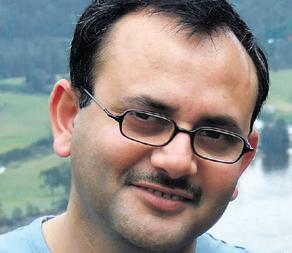
3 minute read
A view on Australia’s Asian engagement
from 2012-11 Sydney (2)
by Indian Link
Panellists discuss the need for a mutually beneficial interaction and involvement between Asia and Australia
BY HASNAIN ZAHEER
The government’s recent white paper called Australia in the Asian Century has generated much debate about why and how Australia should look north into its Asian neighbourhood, especially India, China and Indonesia for continued and sustainable growth. It recommends a number of initiatives such as teaching of priority languages that includes Hindi in schools, Asia experts on company boards etc. But mostly its contribution has been in helping set the context and raising the temperature for Australia’s Asian engagement in economic terms.
One of the events that plugged right into this debate was Digital Australia & Emergent Asia on November 1, organised by Pradeep Khanna of Integrating Australia with Asia and CEO of Global Mindset. The event was hosted by PwC Sydney in their plush Sussex Street offices and was supported by AsiaLink, a think tank created by the University of Melbourne.

About 110 people participated in this event whose core theme was: How will Australia’s digital economy co-exist with the digital, real and blended economies of Asian countries?
Mr Khanna introduced the topic by saying, “In a highly globalised, digitised and services-intense marketplace, if we can access Asian services marketplace, can’t our Asian neighbours access the Australian services marketplace and deliver better quality services at a lower cost? The Australian economy has a high degree of services intensification with services accounting for more than 80% of employment and 75% of GDP. It is a developed economy and more easily accessed in a highly digitised world. Are we prepared for this transformation of our economy?”
Keynote speaker, Matt Barrie, founder and Chief Executive of Freelancer.com, offered a glimpse of the future where chances are that most jobs one can think of will be performed somewhere else in the world, mostly in the emerging markets of Asia and elsewhere, at a fraction of the cost back home. He attempted to help participants visualise a future where every business would be an internet business dominated by software, software and software. In particular he highlighted disruptive business models such as MOOC (Massive Open Online Courses) that are about to impact Universities. This is on top of several industries that have been transformed into software or internet industries such as books retail (Amazon); travel (wotif); music (iTunes); education, recruitment and more to come. He offered generous hints about how to use the internet to grow one’s business.
A panel discussion by Asian business experts followed the topic of the day. It was a robust discussion dominated by the need for Australia to engage more intensively with Asia, in which this Asian Century white paper is just a beginning.
In response to a question about whether there is a single entity called Asia, Trent Lund (Lead Partner for Innovation & Incubation of Digital Ventures, PwC) said, “We keep hearing of Australia as a gateway of Asia. First of all, there is not one Asia, it is a multitude of countries with very unique personalities. They want to do business in an integrated way with people who are there on the ground with them, who understand the nuances of their cultures, and not through a gateway.”
On the definition of the digital economy, Ian Birks, CEO of Australian Services Roundtable, was emphatic that what is needed is not a technology dominated agenda, but one that targets transformation – business, societal and economic transformation.
In regards to whether we will see a time when technology may make country borders irrelevant to form a global community, Prof Aditya Ghose, Professor at University of Wollongong and
President, Service Science Society of Australia, felt there would be a progressive reduction of borders through the use of technology, and that we are already seeing some elements of a homogenous culture emerging as the world becomes flatter. There were, however, differing views from some other panel members.
Dr Dean Economou, Technology Strategist, NICTA, provided a good example of the digital divide not only among nation states, but within a country itself. In one of his visits to South Korea, a highly digitised economy, he found a similar situation as in Australia – with the countryside behind metros in digitisation.

Bob Hayward, Chief Innovation and Technology
Officer, CSC Australia & Asia, was passionately concerned about Australian business not being prepared to take advantage of opportunities from Asia’s rapid growth. He highlighted some of the comparative advantages of Australia - good infrastructure, clean environment, effective public administration system, good welfare health systems, among others. These offered considerable scope in sustainable services trade with the Asian region.
Brad Howarth, commentator and author of Faster Future, a book on digital transformation, felt we all need to take responsibility for creating awareness about the digitising of the economy. Citing his recent visit to Mildura, he gave an example of how we could get a local printer to consider opportunities from a 3D printer instead.
Likewise, Keith Besgrove, First Assistant Secretary, Department of Broadband, Communication and Digital Economy highlighted Australia’s open and flexible economy. This has enabled us to change, adapt and grow in the past, and will do so in the future as well, he noted.
Lindley Edwards, Group CEO, AFG Venture Group and NonExecutive Director, Asialink, concluded the session with closing comments.










